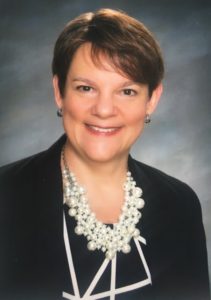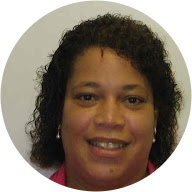Are you an educator seeking tips on how to navigate remote learning using learning management systems (LMS)? Resources from the Center for Strengthening the Teaching Profession’s Teacher Tech Project are here for you. Below, two Washington state teachers who are involved in the project discuss the importance of digital tools, offer advice for educators, and share their thoughts on the upcoming school year. Check out more tech advice from educators here.
Nancy Nelson, NBCT: Schoology

I am an Instructional Coach for Technology, supporting K-12 teachers in the Puyallup School District as they learn how to leverage technology to improve learning. This is my fifth year as a tech coach, and before this job I spent over 30 years teaching middle and high school math. My district began using Schoology four years ago. At first, Schoology was used as a gradebook in secondary schools, but that expanded over time to a more robust use of its other tools, like online discussions, digital assignments, and computer-graded assessments. Our elementary teachers switched to the Schoology gradebook a year ago, so many were just beginning to learn how to use it when school buildings shut down in March. It then became clear that a learning management system (LMS) was critical to successful remote instruction! We learned from our crisis teaching experience that having one place for students and families to find everything was really important, and our district is working now on setting guidelines for courses that will keep communication clear and accessible this fall.
Advice for teachers: Ask a lot of questions! Schoology can do so many things, and teachers often ask to use additional apps because they have not learned all the tools that Schoology contains. Our students and families will really appreciate having everything in one place. If you do not have a Schoology expert in your building or district to rely on, there are lots of ways to get help. I worked on the Teacher Tech Project for the Center for Strengthening the Teaching Profession this summer. A team of teachers with Schoology expertise built a resource guide for new users and set up the Schoology WA Help Desk as both a Facebook group and a Twitter account. My favorite resources in the Resource Guide are the examples of how to organize a course for every age group, because seeing examples is a great way to get started. Asking lots of questions is the fastest way to move from being overwhelmed by a new LMS to confidently creating powerful learning experiences for your students.
There is another advantage to asking lots of questions; you will build connections with other educators. Those connections are what will get us through the challenges this year will bring, and those connections will help us be the best possible teachers we can be. Every teacher knows the importance of building strong relationships with students, but we often forget the magic of a supportive group of colleagues, especially when we are socially and remotely distant. This year, more than ever, we need to help each other by sharing what we learn, reflecting together on our practice, and laughing and crying together. We cannot eat lunch together or chat while waiting for our turn at the copier, so we need to plan for professional connections as part of our planning for fall. When you reach out with a question, you could be helping your expert as much as you are helping yourself.
Manya McFarlane M.Ed, NBCT: Google Classroom

Google Classroom is typically used to communicate assignments and instructions to students. As a third-grade teacher at Liberty Elementary School in Marysville, I used Google Classroom prior to the pandemic to have students complete writing tasks I assigned. I was able to generate a copy of each assignment for every student in my class. This allowed them to work on documents using their chrome books and I was able to view their work and give feedback prior to them making corrections and publishing their work. I also utilized Google Classroom to give every student a copy of their Financial Timesheet, which is a monthly excel spreadsheet where they kept track of their attendance, behavior, graded assignments, class purchases and monthly earnings.
Since the pandemic, Google Classroom has become so much more! It has now become my complete communication portal. There are announcements and surveys for students and parents posted there. Instructional videos I created using Screencastify are located here as well. I can find my parents’ and students’ contact information here. I have a tab for every subject now! These tabs include Specialist, Reading, Math, Writing, Social Studies, and Science. All assignments from every subject are posted within those tabs. There is a tab for every support teacher who serves my students here as well. Student Math workbooks are in Google Classroom, and they can work in them using Kami, an application that converts any PDF to a fillable document. I am then able to view and score their work online without them having to worry about how to get the assignments to me. I also have other workbooks that I want students to complete on the site. There are links to websites that we utilize for our learning in Google Classroom. I have links to Zoom meetings with instructions for the time, the purpose, and the materials needed for each meeting.
My school administrators are now co-teachers in my Google Classroom, so they have access to all assignments, and Zoom meetings. This is their only way to “Come on in” to see what Mrs. McFarlane’s students are doing today! Every Specialist teacher and Support staff are now co-teachers as well. My classroom is a virtual open door. Google Classroom is very important now because it has become my and my students’ Classroom. It is where my students now go to find all of what they need to complete all of their work.
Advice to educators: Seek information from teachers who are using Google Classroom. One way to do this is to look for teacher created videos on the internet that explain how to use Google Classroom. One such location for this information is through the recently developed LMS supports created by teachers in the Teacher Tech Project. These teachers can answer questions and find information and resources on the Google Classroom LMS. I would advise teachers to search YouTube for specific topic videos. I also learned a lot of what I know by simply not being afraid to click on links within Google Classroom to see what they do. You can’t hurt anything! I would recommend that new learners focus on getting the basics, take it slowly and learn as you go.
I know in this time of distance learning teachers are having to learn a great deal. We are all trying to figure it out. Technology comes easier to some more than to others, who will have to look harder for information and connect with those who have already somewhat, if not completely, figured out what works and what doesn’t. We all know that experience is the best teacher, so go and experience. I will say most of what we need we already know. We know our students need us. We know we care. We know how to teach students. We also know we will do the very best we can in our new environments. That’s all anyone can truly ask of anyone. Don’t quit! That is a surefire way to fail!
The Center for Strengthening the Teaching Profession’s Teacher Tech Project, funded by the Bill and Melinda Gates Foundation, provides information, resources and learning opportunities for teachers to develop their knowledge, skills and understanding of learning management systems and instruction for distance learning. Through the Teacher Tech Project, 36 Washington state teachers have worked through the summer to create learning opportunities in preparation for the remote learning in the fall. Resource Guides have been developed with curated information and resources for the five most commonly used Learning Management Systems in WA (Canvas, Google Classroom, Microsoft Teams, Schoology, and Seesaw). “Ask-A-Teacher” Help Desks utilize social media to engage teachers in asking and answering specific questions about the LMS platforms. Lastly, asynchronous modules about instructional design in distance learning have been created and cover topics including community building, student engagement, differentiation, and feedback to students, to name a few. All of these resources are free and available on CSTP’s website at http://cstp-wa.org/teacher-tech-project-ttp/.
Thank you to CSTP and the teachers who collaborated with us on this blog post.